How to remove redirects to and from speakwithjohns.com
Notification SpamAlso Known As: speakwithjohns.com pop-up
Get free scan and check if your device is infected.
Remove it nowTo use full-featured product, you have to purchase a license for Combo Cleaner. Seven days free trial available. Combo Cleaner is owned and operated by RCS LT, the parent company of PCRisk.com.
What is speakwithjohns[.]com?
Sharing similarities with exq-timepieces.com, odicfulbrid.info, ryseconomi.info and thousands of others, speakwithjohns[.]com is a rogue web page. Visitors to this site are presented with dubious content and are redirected to other untrusted or malicious websites.
People do not generally enter speakwithjohns[.]com (or similar sites) intentionally - most are redirected to them by intrusive advertisements or Potentially Unwanted Applications (PUAs) already installed onto the system.
These apps do not need explicit user consent to infiltrate systems and, following successful infiltration, they cause redirects, deliver intrusive ad campaigns and track browsing-related information.
![speakwithjohns[.]com pop-up redirects](/images/stories/screenshots202003/speakwithjohns-com-ads-main.jpg)
The geolocation is crucial in determining the behavior of speakwithjohns[.]com. It learns this information by checking visitors' IP (Internet Protocol) addresses. Depending on their geolocations, users are redirected elsewhere and/or are presented with dubious material.
Additionally, this website uses browser notifications. Visitors are often tricked into allowing them with 'clickbait' (e.g. "Press 'Allow' to verify, that you are not [a] robot"). If the notifications are enabled, speakwithjohns[.]com starts running intrusive ad campaigns.
The delivered ads significantly affect the browsing experience, since they diminish browsing speed and overlay page content. These advertisements are also a threat to device/user safety.
When clicked, they redirect to sale-oriented, untrusted/rogue, compromised, deceptive/scam and malicious sites. Intrusive ads can even be triggered (when clicked) to execute scripts designed to stealthily download/install rogue software (e.g. PUAs). Unwanted apps can force-open likewise dangerous websites and can deliver intrusive ad campaigns.
Furthermore, most PUAs have data tracking capabilities. They monitor browsing activity (URLs visited, pages viewed, search queries typed, etc.) and gather users' personal information (IP addresses, geolocations and other details). The collected data contains personally identifiable information and is often shared with third parties seeking to misuse it for profit.
In summary, the presence of PUAs on systems can cause infiltration and infections, lead to serious privacy issues, financial loss and even identity theft. To ensure device and user safety, you are strongly advised to immediately remove all suspect applications and browser extensions/plug-ins.
| Name | speakwithjohns.com pop-up |
| Threat Type | Push notifications ads, Unwanted ads, Pop-up ads. |
| Detection Names | CLEAN MX (Malicious), Sucuri SiteCheck (Malicious), Full List Of Detections (VirusTotal) |
| Serving IP Address | 134.209.199.15 |
| Observed Domains | 8.speakwithjohns[.]com; 3.speakwithjohns[.]com; 1.speakwithjohns[.]com; 9.speakwithjohns[.]com; 6.speakwithjohns[.]com; 10.speakwithjohns[.]com; 0.speakwithjohns[.]com |
| Symptoms | Seeing advertisements not originating from the sites you are browsing. Intrusive pop-up ads. Decreased internet browsing speed. |
| Distribution Methods | Deceptive pop-up ads, potentially unwanted applications (adware). |
| Damage | Decreased computer performance, browser tracking - privacy issues, possible additional malware infections. |
| Malware Removal (Windows) |
To eliminate possible malware infections, scan your computer with legitimate antivirus software. Our security researchers recommend using Combo Cleaner. Download Combo CleanerTo use full-featured product, you have to purchase a license for Combo Cleaner. 7 days free trial available. Combo Cleaner is owned and operated by RCS LT, the parent company of PCRisk.com. |
PUAs typically seem legitimate and entice users into downloading/installing them with offers of "useful" functions. These features rarely work as promised and, in most cases, are nonoperational. The only purpose of these apps is to generate revenue for the developers.
PUAs cause redirects to untrusted and malicious web pages, run intrusive ad campaigns and gather vulnerable data.
How did adware install on my computer?
PUAs can be downloaded/installed together with other software. "Bundling" is the name of this deceptive marketing tactic of pre-packing regular programs with unwanted or malicious additions.
By rushing download/installation processes (e.g. ignoring terms, skipping steps and sections, using pre-set options, etc.), many users risk inadvertently allowing bundled content onto their devices. Certain PUAs have "official" promotional pages from which they can be downloaded.
Once clicked, intrusive advertisements can execute scripts to download/install PUAs without users' permission.
How to avoid installation of potentially unwanted applications
All products should be researched before download/installation. Use only official and verified download channels. Sources including unofficial and free file-hosting sites, P2P sharing networks (BitTorrent, Gnutella, eMule, etc.) and other third party downloaders are untrusted and should not be used.
When downloading/installing, you are advised to read the terms, explore all possible options, use the "Custom/Advanced" settings and opt-out of supplementary apps, tools, features and other additions. Intrusive ads often seem normal and innocuous, however, they can redirect to dubious web pages (e.g. gambling, pornography, adult-dating and so on).
If you encounter these ads/redirects, check the system and immediately remove all suspicious applications and browser extensions/plug-ins. If your computer is already infected with rogue applications, we recommend running a scan with Combo Cleaner Antivirus for Windows to automatically eliminate them.
Appearance of speakwithjohns[.]com website (GIF):
![speakwithjohns[.]com website appearance (GIF)](/images/stories/screenshots202003/speakwithjohns-com-appearance.gif)
Instant automatic malware removal:
Manual threat removal might be a lengthy and complicated process that requires advanced IT skills. Combo Cleaner is a professional automatic malware removal tool that is recommended to get rid of malware. Download it by clicking the button below:
DOWNLOAD Combo CleanerBy downloading any software listed on this website you agree to our Privacy Policy and Terms of Use. To use full-featured product, you have to purchase a license for Combo Cleaner. 7 days free trial available. Combo Cleaner is owned and operated by RCS LT, the parent company of PCRisk.com.
Quick menu:
- What is speakwithjohns.com pop-up?
- STEP 1. Remove spam notifications from Google Chrome
- STEP 2. Remove spam notifications from Google Chrome (Android)
- STEP 3. Remove spam notifications from Mozilla Firefox
- STEP 4. Remove spam notifications from Microsoft Edge
- STEP 5. Remove spam notifications from Safari (macOS)
Disable unwanted browser notifications:
Video showing how to disable web browser notifications:
 Remove spam notifications from Google Chrome:
Remove spam notifications from Google Chrome:
Click the Menu button (three dots) on the right upper corner of the screen and select "Settings". In the opened window select "Privacy and security", then click on "Site Settings" and choose "Notifications".
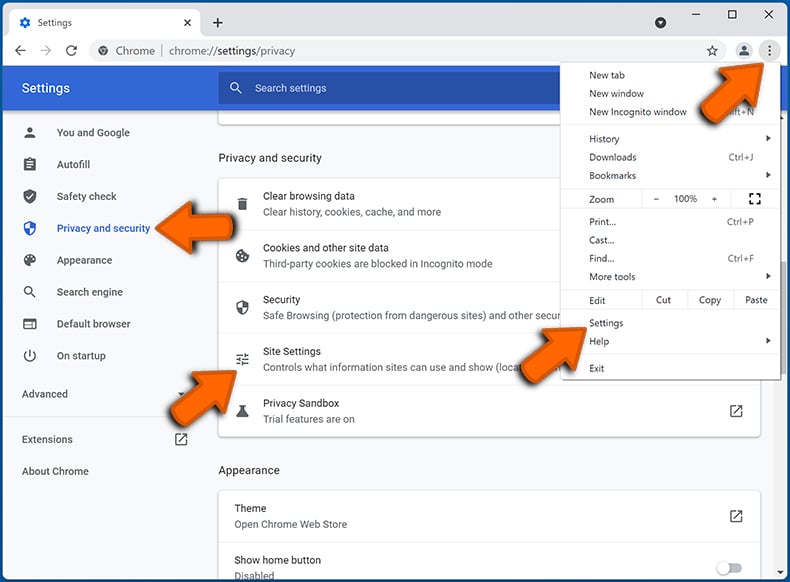
In the "Allowed to send notifications" list search for websites that you want to stop receiving notifications from. Click on the three dots icon near the website URL and click "Block" or "Remove" (if you click "Remove" and visit the malicious site once more, it will ask to enable notifications again).
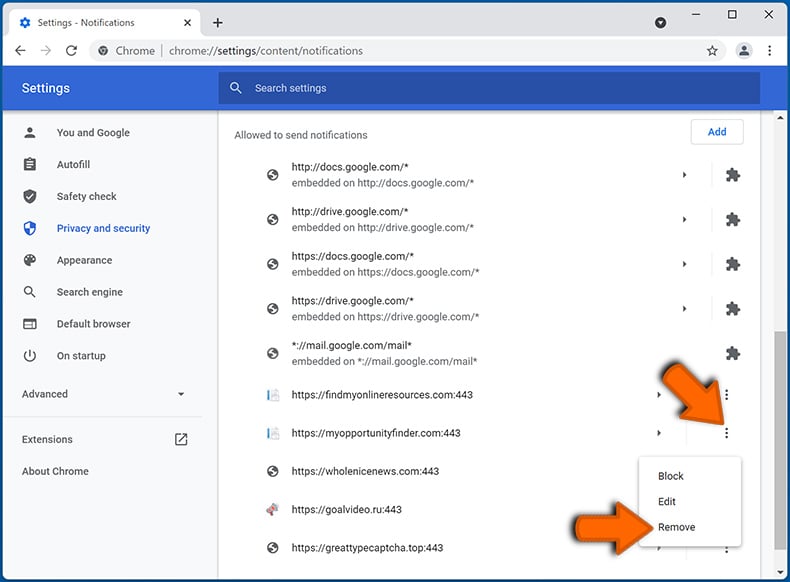
 Remove spam notifications from Google Chrome (Android):
Remove spam notifications from Google Chrome (Android):
Tap the Menu button (three dots) on the right upper corner of the screen and select "Settings". Scroll down, tap on "Site settings" and then "Notifications".
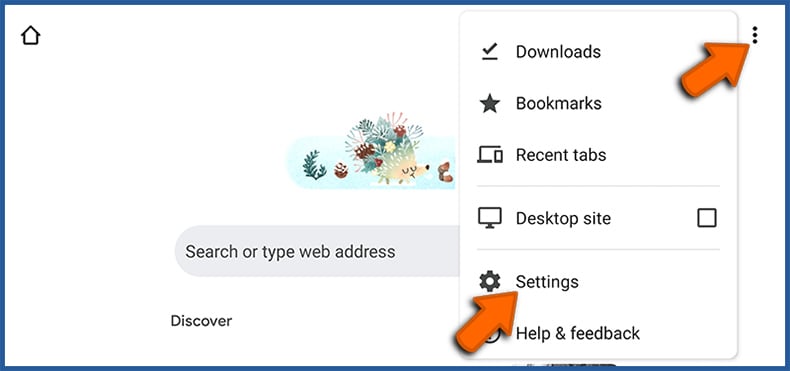
In the opened window, locate all suspicious URLs and tap on them one-by-one. Once the pop-up shows up, select either "Block" or "Remove" (if you tap "Remove" and visit the malicious site once more, it will ask to enable notifications again).
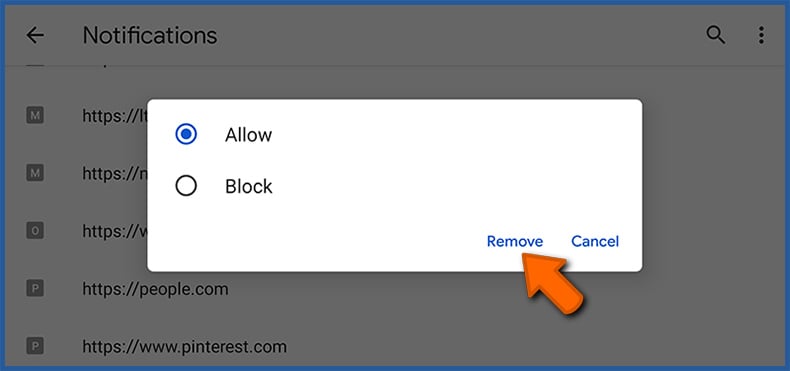
 Remove spam notifications from Mozilla Firefox:
Remove spam notifications from Mozilla Firefox:
Click the Menu button (three bars) on the right upper corner of the screen. Select "Settings" and click on "Privacy & Security" in the toolbar on the left hand side of the screen. Scroll down to the "Permissions" section and click the "Settings" button next to "Notifications".
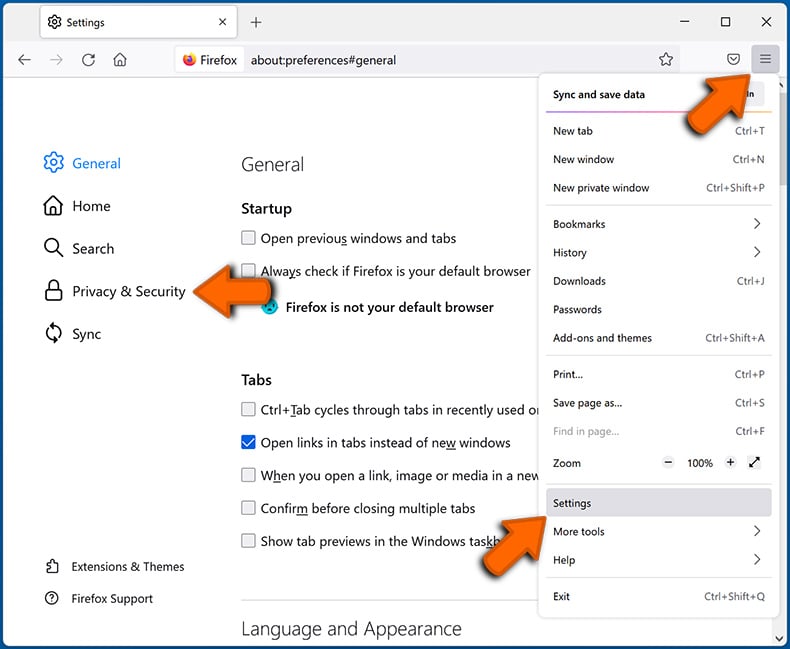
In the opened window, locate all suspicious URLs and block them using the drop-down menu or either remove them by clicking "Remove Website" at the bottom of the window (if you click "Remove Website" and visit the malicious site once more, it will ask to enable notifications again).
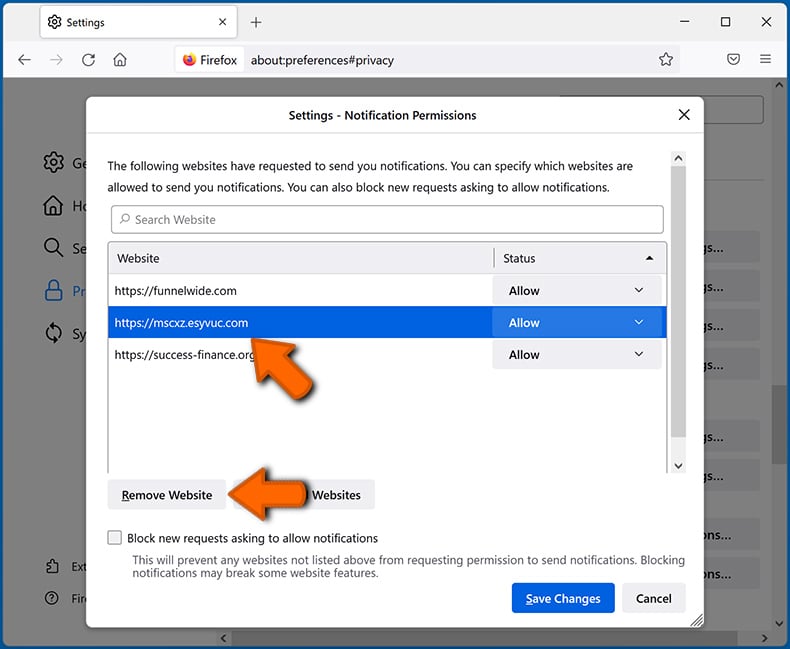
 Remove spam notifications from Microsoft Edge:
Remove spam notifications from Microsoft Edge:
Click the menu button (three dots) on the right upper corner of the Edge window and select "Settings". Click on "Cookies and site permissions" in the toolbar on the left hand side of the screen and select "Notifications".
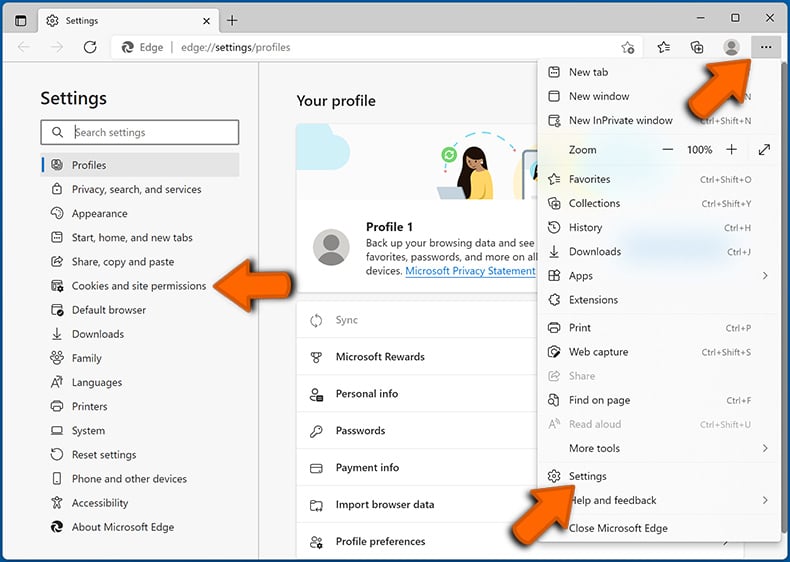
Click three dots on the right hand side of each suspicious URL under "Allow" section and click "Block" or "Remove" (if you click "Remove" and visit the malicious site once more, it will ask to enable notifications again).
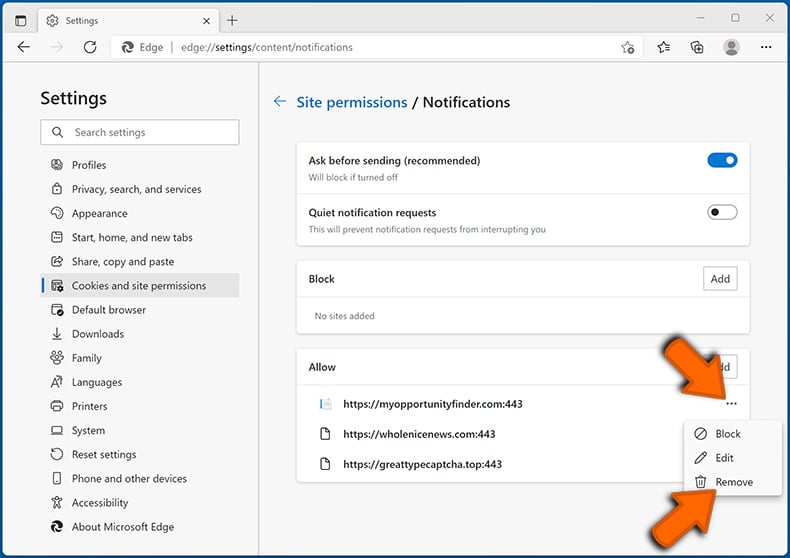
 Remove spam notifications from Safari (macOS):
Remove spam notifications from Safari (macOS):
Click "Safari" button on the left upper corner of the screen and select "Preferences...". Select the "Websites" tab and then select "Notifications" section on the left pane.
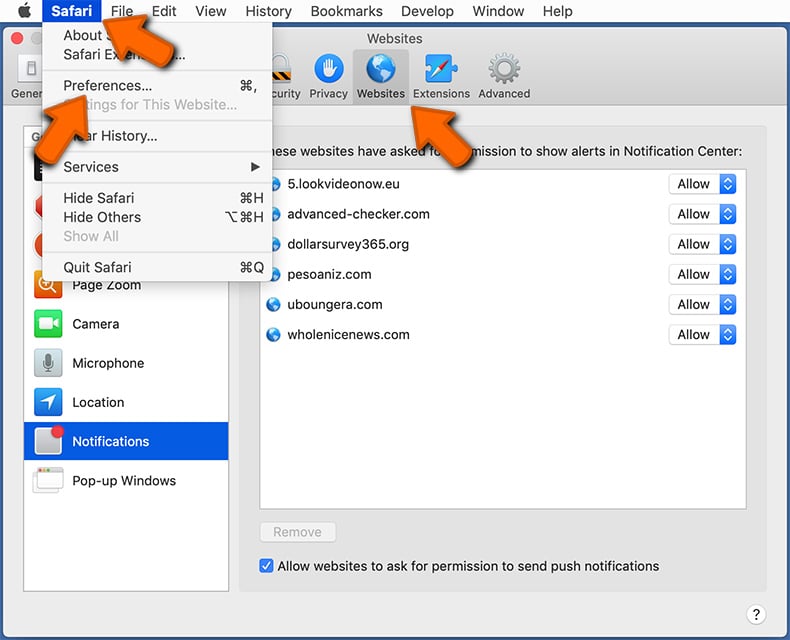
Check for suspicious URLs and apply the "Deny" option using the drop-down menu or either remove them by clicking "Remove" at the bottom of the window (if you click "Remove" and visit the malicious site once more, it will ask to enable notifications again)
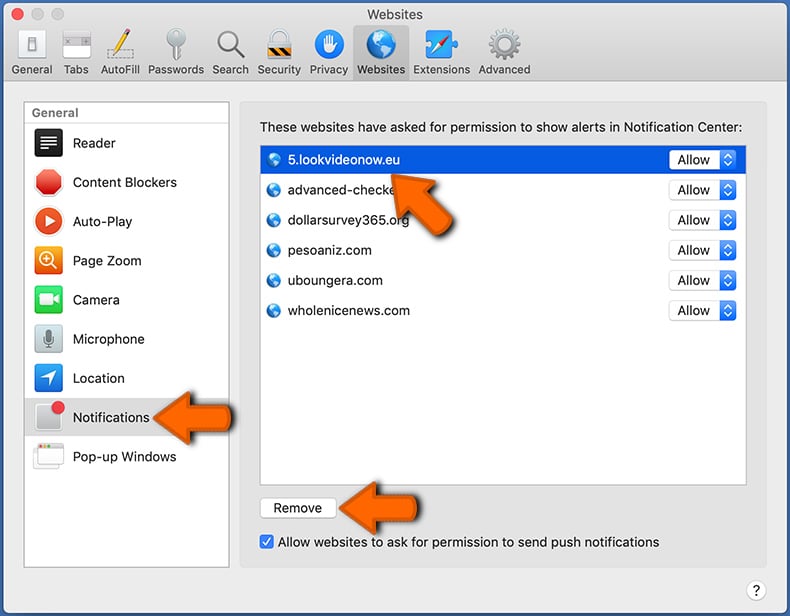
How to avoid browser notification spam?
Internet users should be very skeptical when being asked to allow notifications. While this is a useful feature that allows you to receive timely news from websites you like, deceptive marketers frequently abuse it.
Only allow notifications from websites that you fully trust. For added security - use an anti-malware application with a real-time web browsing monitor to block shady websites that tries to trick you into allowing spam notifications. We recommend using Combo Cleaner Antivirus for Windows.
Share:

Tomas Meskauskas
Expert security researcher, professional malware analyst
I am passionate about computer security and technology. I have an experience of over 10 years working in various companies related to computer technical issue solving and Internet security. I have been working as an author and editor for pcrisk.com since 2010. Follow me on Twitter and LinkedIn to stay informed about the latest online security threats.
PCrisk security portal is brought by a company RCS LT.
Joined forces of security researchers help educate computer users about the latest online security threats. More information about the company RCS LT.
Our malware removal guides are free. However, if you want to support us you can send us a donation.
DonatePCrisk security portal is brought by a company RCS LT.
Joined forces of security researchers help educate computer users about the latest online security threats. More information about the company RCS LT.
Our malware removal guides are free. However, if you want to support us you can send us a donation.
Donate
▼ Show Discussion